I am trying to convert a given Mat representing an RGB image with 8-bit depth to Lab using the function provided in the documentation:
cvtColor(source, destination, <conversion code>);
I have tried the following conversion codes:
CV_RGB2Lab
CV_BGR2Lab
CV_LBGR2Lab
I have received bizarre results each time around, with an "L" value of greater than 100 for some samples, literally <107, 125, 130>.
I am also using Photoshop to check the results - but given that 107 is beyond the accepted range of 0 ≤ L ≤ 100, I can not comprehend what my error is.
Update: I'll post my overall results here: Given an image (Mat) represented by 8-bit BGR, the image can be converted by the following:
cvtColor(source, destination, CV_BGR2Lab);
The pixel values can then be accessed in the following manner:
int step = destination.step;
int channels = destination.channels();
for (int i = 0; i < destination.rows(); i++) {
for (int j = 0; j < destination.cols(); j++) {
Point3_<uchar> pixelData;
//L*: 0-255 (elsewhere is represented by 0 to 100)
pixelData.x = destination.data[step*i + channels*j + 0];
//a*: 0-255 (elsewhere is represented by -127 to 127)
pixelData.y = destination.data[step*i + channels*j + 1];
//b*: 0-255 (elsewhere is represented by -127 to 127)
pixelData.z = destination.data[step*i + channels*j + 2];
}
}

